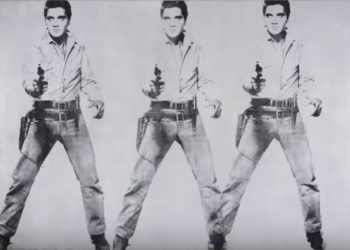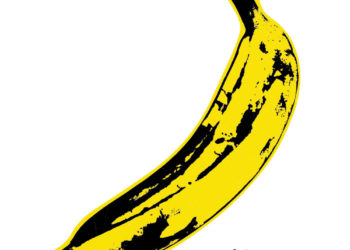Back in the ancient times of 1985, the Amiga 1000 Computer made its debut in a splashy event at New York City’s Lincoln Center. Andy Warhol was commissioned to demonstrate the artistic capabilities of this marvelous new machine, and at the event was brought onstage to create a portrait of Blondie’s Deborah Harry. Other than a printout of the portrait owned by Harry, the other copy and the digital files behind it were thought lost until last month, when Commodore engineer Jeff Bruette, who taught Warhol how to use the computer, announced the upcoming sale of his printout and the floppy discs containing the files. An entertaining rundown of the event and Warhol’s efforts is available from David Farquhar. While the image may not look all that impressive in today’s post-Pixar world, remember that Microsoft Windows wasn’t even out at the time. It’s great to see this important piece of both computer history and art recovered. Find below the video of the “live” creation of the portrait at the event. I put “live” in quotation marks because, as anyone who has ever done a live demo of a new technological product knows, things can go wrong, and they did during this event. Apparently it didn’t quite work right, and video from a rehearsal earlier in the day was substituted. The more things change, the more they stay the same.
Discussion
6 Thoughts on "Digital Archiving: Andy Warhol’s Lost Amiga Art Found"
This is amazing. I’m old enough to remember Amiga and how amazing demos like this looked at the time. Two things come to mind when watching this. First, it’s wonderful that we’re able to celebrate the rediscover of these files and this moment in computer and art history, but it makes me wonder how many things have been lost over time that can’t be recovered. It’s just a consequence of our ability to create, but it’s a little sad. Second, it’s nice to see someone else run a demo in this fashion so early. Steve Jobs hadn’t yet perfected his trademark presentations and product releases yet so the celebrity angle and the mixing of digital and human dancers seems quite forward thinking for that time.
Truly amazing! 1985 was when I got my first email address (linked to university) and was somewhat bothered that there was almost no one I could text to with my newly found toy….
Thanks for that. It raised all sorts of thoughts, including how ephemeral it was to be the leader early on in tech, and how business decisions trumped engineering and science prowess. The Amiga went from being a rival of Xerox for being the most advanced microcomputers of their day to a forgotten footnote, along with the contemporaries mentioned, IBM’s OS and Lotus. And howYouTube has become the great archive of historical popular culture, which is controlled by one company that’s presently on top. And how the practical speed of a PC hasn’t changed that much in 40 years, i.e., how much time the human spends sitting there waiting for the computer to do something.
And it made me wonder how the “Scholarly Kitchen” debates of the day would have been. “Authors are writing manuscripts on computers with word processors, and they want to just mail in a ‘floppy disk!’ But there’s no standard word processor or OS and the don’t work with each other, and all the publishers are approaching it differently. It’s chaos!”
You made me late to work again.
Okay, now you’ve stirred up long dormant memories of all-nighters running around the conference room table collating and assembling stacks of grant applications the night before they had to be Fedexed to funding agencies. Shudder. Or spending the day taking photographs on the microscope and running them to the one-hour photo place up the block to see if any of them came out decently. Though I will admit some nostalgia over the handcrafting of composite figures, cutting and pasting physical photographs with letraset rub-on letters onto a board, then running them downtown on the subway to Duggal in Chelsea to get them re-photographed.
But this was all post-Windows, and when 3.0 came out, it was a serious game changer. I can complain, but those using typewriters and carbon paper can laugh at me.
Continuing with the memorabilia, my husband got a very special birthday present around the ninetys: Word 1.0 on a floppy disk! The latest on high tech :). And shudder, I submitted a sequence of 3 papers (published in 1989) on floppy disks. Made 2 extra copies on other floppies to garantee I have the originals, and woe me, when the peer review came back asking for a couple of corrections, all floppies were unrecoverable. Luckily I had a printed version. I spent the next 48 hours retyping the 3 manuscripts, ensuring that all the original lines looked exactly the same so the reviewers wouldn’t think I had tampered with the text!



